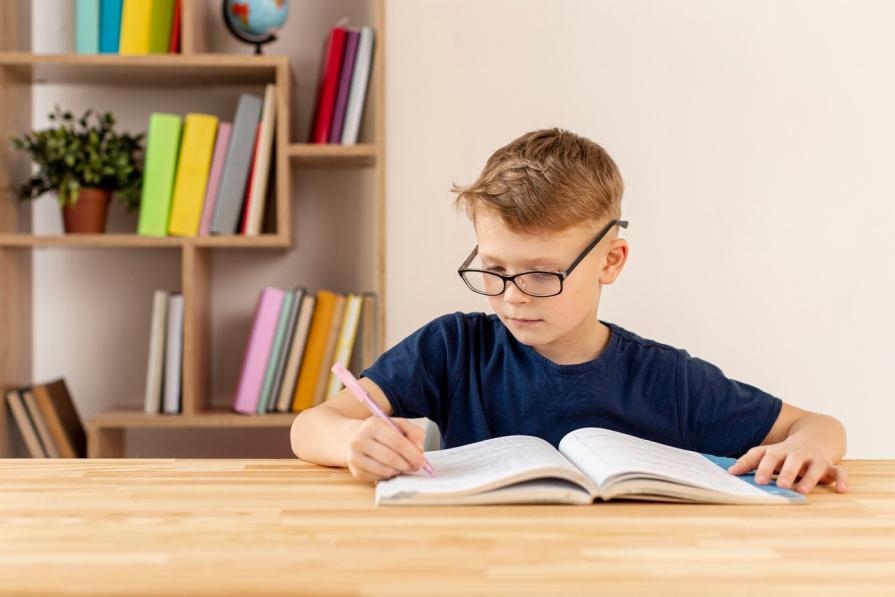Time management is a popular practice of optimizing your time. Everyone can learn this, and such a skill will be useful not only for adults or students, but also for schoolchildren: for an effective combination of studying and additional classes, sports sections and everything that the life of a modern schoolchild is saturated with to the limit.
Today we decided to talk about some tools that allow you to learn how to manage time effectively.

Why do schoolchildren not have enough time?
There are no unsolvable problems: if you do not see a solution, then you are either not competent enough and need the help of a specialist, or (which happens much more often) simply did not understand the reasons. Often the lack of free time in children is attributed to homework (no one argues, there is a lot of it) or numerous additional activities. Sometimes everything is so bad that the poor guys do not even have time for walks and sleep, which results in chronic fatigue and apathy, loss of interest in everything.
However, in reality - even with maximum workload! — All explanations often boil down to several reasons:
- the child spends too much time on homework because he is often distracted or has difficulty mastering the material;
- the child spends too much time on electronic toys, the Internet or correspondence on social networks;
- In the family, in principle, it is customary to postpone things for later;
- in a child, ADHD is a psychological disorder that has a negative impact on the ability to concentrate on certain tasks and issues.

All these factors can be eliminated - both on your own and by contacting professionals for help. In 70% of cases, teaching children time management skills will help.
At what age can a child be taught to plan his life?
In order to plan something, you need motivation. The first such event in the life of a child is school, so as you begin to prepare for school, you can safely start preparation to manage and command time.
Start with the simplest thing - write the simplest plan for some task or a list of things to do for the day. The key point here is consistency: it can be chronological or take into account priority.
If the child does not yet know how to read, it does not matter! Things can be marked with photos or drawings: you can draw a toothbrush with toothpaste, a walk with a ball game, cleaning or clothes, right? Ideally, these are stickers – then you can simply stick them on a certain field or, for example, on the refrigerator door.
Now the most important thing: let the child do the usual things, and you will mark the time in which he copes with the task. If everything works out, offer him to improve the timing, but don't get carried away: the main thing is realism, a sense of satisfaction and independence. Over time, your help as an arbiter will no longer be needed, he will learn everything on his own - and set tasks, and monitor their implementation, and measure time.
How to solve problems effectively?
All people are unique, especially children, so there is no universal instruction for planning. In fact, the source of problems with concentration can be both psychological and emotional. Therefore, if children clearly do not pull the material, do not rush to criticize or scold - perhaps he simply does not know how to do better.
There are a few simple tips to help you be more productive.
- Determine the optimal time
Some children need to rest after school, others, on the contrary, keep in good shape for an hour or two after they come home from class, and then they begin to yawn, nod their nose - and productivity is uncontrollably reduced. There are those who are in a working mood late at night after school, while others, on the contrary, work better in the morning.
- Cut off the unnecessary
Put your phone away and turn off the Internet. TV and radio also do not contribute to concentration – they will interfere and distract: even if the content of the program is not interesting to the child, he will feverishly cling to at least something that is not the lessons.
- Do it visually

The easiest way to make a plan is in a special application, but for children it will be more effective to make a paper one: handwritten or printed, with stickers or stripes that can be painted over as the task progresses, it will clearly show your plans with the child.
- Establish a routine
The child's daily routine should include at least 8 hours of sleep and meals at a strictly allotted time. From these basic marks and intervals, you will act, making a schedule.
- Keep complex things simple
Preparing for a test is difficult and incomprehensible. Divide this task into several feasible ones, write separately the numbers of the exercises that need to be done, a list of rules for repetition, and so on. The child will do all this step by step, will see progress, so that subconsciously it will be easier and simpler.
Time Management for Schoolchildren: Key Points
Time management is not equal to the ability to complete the maximum in the minimum of time. Not at all! This is the art of highlighting the main thing, engaging in point planning and not wasting time on trifles. To use your time as efficiently as possible, we advise:
- learn to organize your workspace so that nothing distracts the child from the priority task at the moment,
- move from the complex to the simple – first do what you don't like and takes the most time,
- make your to-do list in advance so that you can go clearly on schedule in the morning.

All this allows not only to improve the quality of work, but also to free up time for sleep and entertainment, walks and communication.
What practical time management techniques should schoolchildren master?
- First of all, the list needs to be visualized — write or draw. To show how easier it is to do, and at the same time convince of the effectiveness, use a trick for the first time - offer to make a list of New Year's or "birthday" gifts.
- There are things that you do day in and day out. You can make a convenient sign for them and fill them out with stickers, color marks, or other visually understandable marks.
Two Time Management Exercises
For studying, we recommend two simple exercises.
- The first is quite simple, it allows you to develop a sense of time. You need to set a time period — for example, a quarter of an hour — and set a task that the child must complete during that time. Let him start doing on command, and you set a timer; His task is to finish when, in his opinion, the allotted deadline is over.
- The second exercise is a little more difficult, it is based on Eisenhower cards and requires attention and a critical approach. Come up with four tasks and ask the child to sort them by priority, and then ask them to argue their choice.
Parents' help
Like any joint activity, helping parents master time management can bring you closer to your child. Start with joint planning and gradually reduce your participation to a minimum, come to the rescue, but only on request. Your task is to help your child learn to manage his time so that he spends every minute with maximum efficiency. A parental example can help here – show your son or daughter your planner (it doesn't matter if you fill it out the old-fashioned way, use Google Calendar or an app, or it all comes down to sticky notes with tasks), you can even consult and discuss common plans.
Remember that you are dealing with a child, so plans and tasks should have a real scale and horizons!













